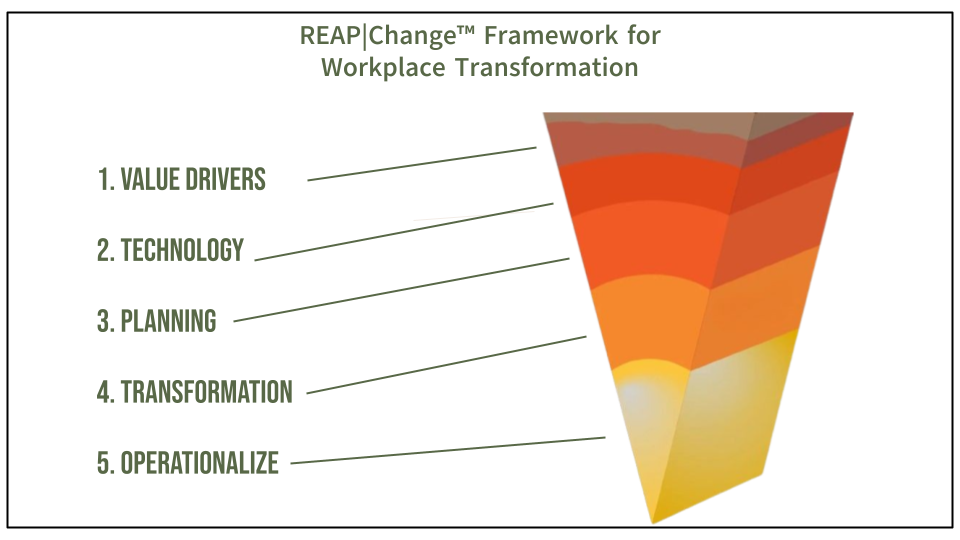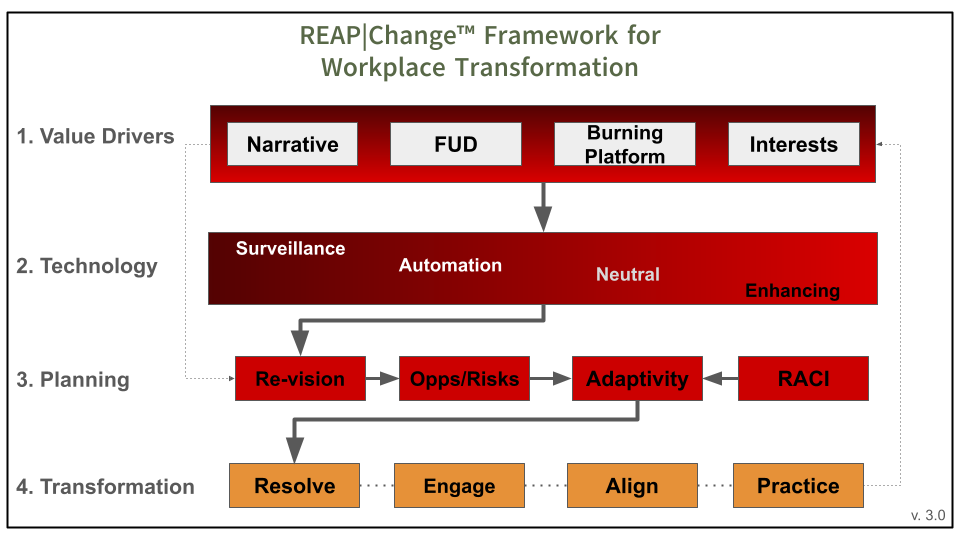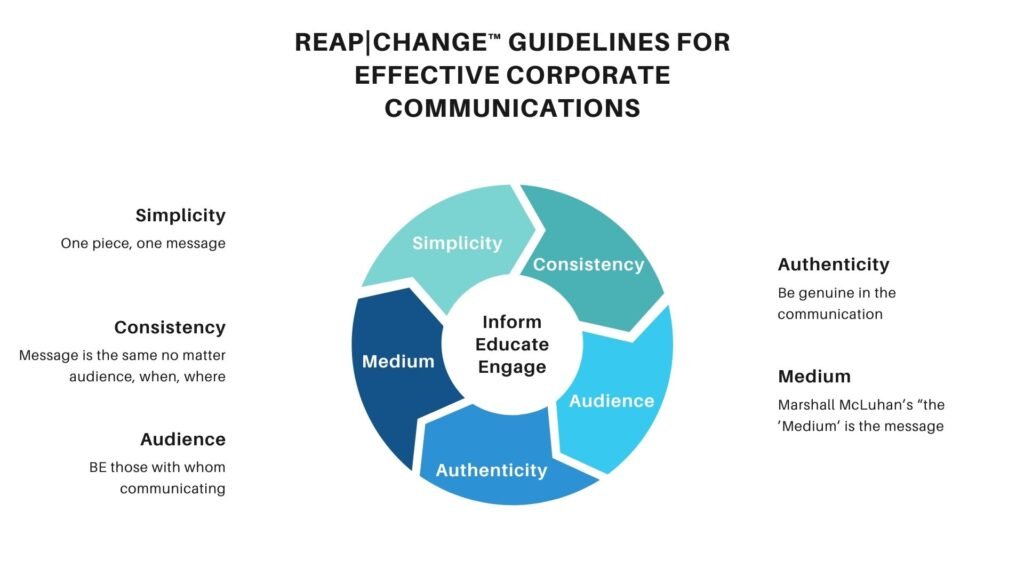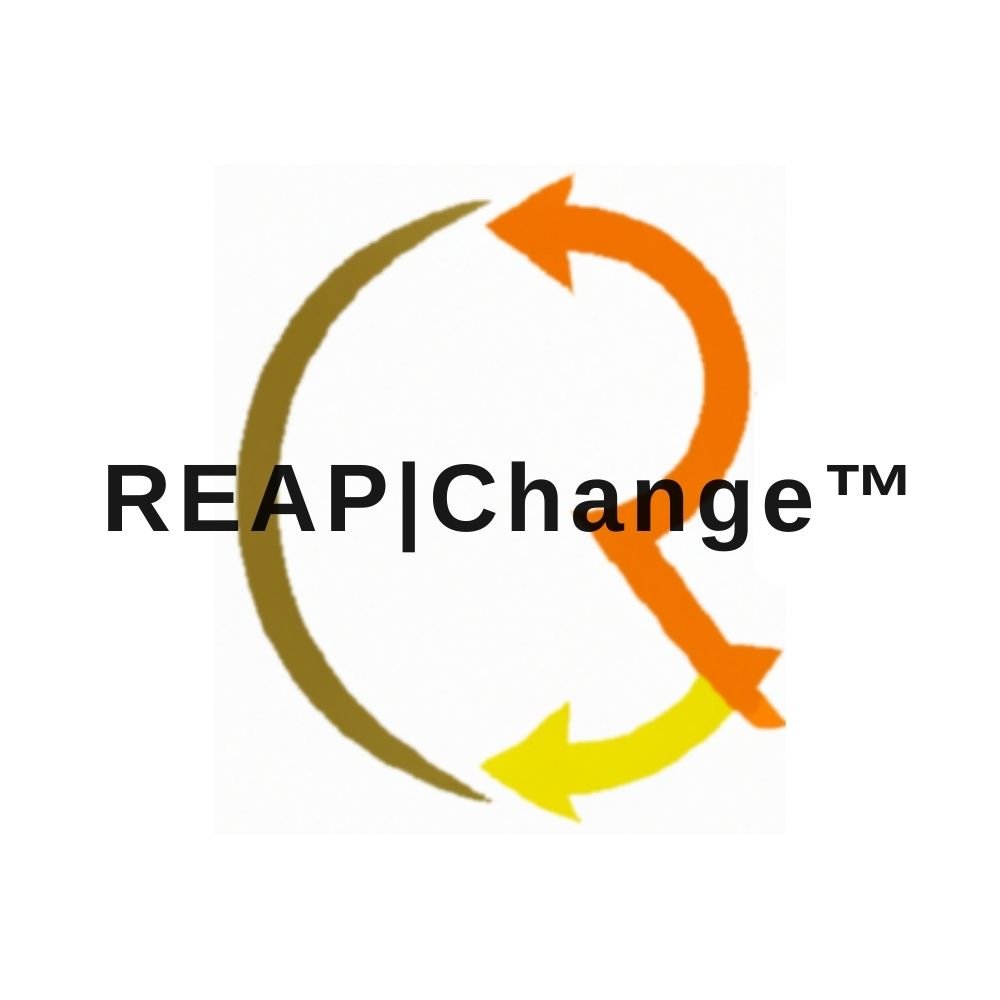
About the Framework
Change for the Better
Value-Driven Change

The REAP|Change™ Framework for Peopled-centered A.I. development was built in the Age of A.I. with A.I. tools for A.I. development and deployment …
✅ Lower risk exposure by embedding A.I. Trust and Safety into A.I. development – BEFORE costly deployment mishaps
✅ Protect brand value by demonstrating authentic commitment to responsible A.I.
✅ Reduce costly A.I. implementation failures by ensuring business Alignment with A.I. objectives
✅ Create competitive advantage through enhanced A.I. user innovation and productivity.
Go with the Flow

The Framework promotes four primary phases of Workplace Transformation:
1. Value drivers offer the reason(s) for the organization’s choice to make a Change. They shape the upcoming discussions of the “why” of the transformation a company wants to undertake to mobilize staff’s support.
2. The nature of the Technology (if any is or will be implemented) also greatly influences the vision a business projects of itself into the future.
3. The key to Planning is taking the Drivers for Change and Technology utility to determine and plan for upcoming stakeholder uneasiness with AI.
4. Subsequently, Resolution of stakeholder uneasiness comes through Engagement and Practice with a constant attention to Alignment.
Enterprise Safe A.I. Culture Tools by REAP|Change™ Phase
1. Value drivers

Let’s factor business intentions for A.I. development and deployment into A.I. Trust and Safety measures …
Value drivers are the MOTIVATIONS for the business’s decision to develop A.I.
Narrative
Leveraging corporate mythology and origin stories is a powerful way to create a compelling case for Transformation within the REAP|Change™ Framework.
FUD
The FUD factor—fear, uncertainty, and doubt— has played a significant role in driving streaming companies to change their business models from subscription-only to subscription+advertisements.
Burning Platform
The Burning Platform concept is a critical component of the REAP|Change™ Framework.
It highlights the necessity of Workplace Transformation in the face of pressing challenges or threats.
Interests
Interests include the benefits and penalties shareholders and leadership stand to reap through the Workplace Transformation.


2. Technology
Let’s look at the REAP|Change™ A.I. Tools that assure A.I. Trust and Safety. …
The nature of the Technology (if any is or will be implemented) also greatly influences the vision a business projects of itself into the future.

3. Planning

Let’s look at the REAP|Change™A.I. Tools for Planning …
The key to Planning is taking the Drivers for Change and Technology Utility to anticipate upcoming stakeholder uneasiness with AI.
Re-Vision
Re-visioning assesses the organization’s current state and envisions the desired future state. Then, leaders can identify the gaps in the states that need to be addressed to define clear objectives for the Transformation.
Opportunities, Risks, Roadblocks
The Opportunities stage involves a thorough analysis of the potential benefits, challenges, and barriers associated with the Workplace Transformation.
Adaptivity
Adaptivity is a key differentiator of the REAP|Change™ Framework. The activity acknowledges the human side of Transformation and the importance of addressing cognitive dissonance and uneasiness among employees.
Roles and Responsibilities
Clearly defining roles and responsibilities is essential for the success of any Workplace Transformation.
4. Transformation

Let’s look at the REAP|Change™A.I. Tools for Transformation …
Resolution of stakeholder uneasiness comes through Engagement, clear and consistent communications, and Practice with a constant attention to Alignment.
Resolve
The Resolve stage focuses on addressing the cognitive dissonance and concerns that employees may experience during the Transformation process.
Engage
Engaging stakeholders is critical to build buy-in, gather valuable insights, and ensure the Workplace Transformation meets the needs of the organization.
Align
Aligning the organization around the Transformation objectives and metrics is essential to gain focus, consistency, and accountability in the Workplace Transformation.
Practice
The Practice stage emphasizes the importance of hands-on learning and application to build the skills and confidence needed to succeed in the new environment.




